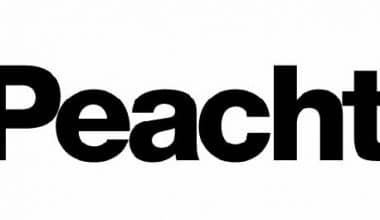What is Construction Management at Risk?
CMAR (construction management at risk) is a groundbreaking approach to construction project delivery strategies that can be used to complete projects and contracts of all sizes and values. This system can also be referred to as CM@risk or CM at risk.
N.B: Depending on the context, CMAR could also mean Construction Manager at Risk.
All project delivery methods, in turn, are made up of elements such as design, planning, building, and financing. Typically, an owner, designer, or builder can determine how to handle each of these crucial components. The most popular delivery method follows a project’s design by material and expertise bidding, and then through the building or construction process.
How Construction Management at Risk Works
The Construction Management at Risk method takes a different approach to these contracts than the conventional design-bid-build methods. CMAR, among other factors, shortens the time it takes to complete a building project. The method necessitates the hiring of a project manager, who is typically a general contractor with the necessary technical and financial capabilities. This management role could either go to an individual or a company. During the initial planning and pre-planning periods, the design and drawing phases, or the pre-construction stage, a CMAR may be brought in.
The Construction Management at Risk firm can be tasked with assisting the owner in the following areas during the contract:
- Timeline for construction
- Budget for the project
- Analyzing the cash flow
- Methods and means discussions and acceptance.
- Value engineering
- Projects costing
The CM at Risk as a Consultant
The construction management at risk strategy is a delivery method in which a construction management company acts as an employee consultant during the project’s pre-development process. Throughout this procedure, the project owner can depend on the CMAR. This gives them the authority to hire several subcontractors for requesting and accepting bids. They often come off as primary points of contact for the project’s completion.
During the design process, a CMAR will typically work to determine a guaranteed maximum price (GMP) based on bids received from subcontractors. They would almost always have a contingency sum to account for any unexpected circumstances. After that, they’ll provide the owner with a final GMP construction cost. The amount of the CMAR’s fee and profit margin, the subcontractors’ bids, and all contingency allowances equals this price. The owner can also use the CMAR to plan and apply complex bid packages for special projects.
However, the owner will not pay more than the GMP submitted by the CMAR until it has been approved. The Construction Management at risk may also begin their position as a hiring manager for subcontractors who will complete the project at this stage.
The CMAR as a Manager
The CM at risk has transitioned from being a consultant during the pre-development stage to being a manager and overseer. Additionally, the owner may wish to delegate additional duties to the CMAR. Basically, the CM at risk’s primary focus during the early stages of a project will be on cost control and schedule coordination. However, once the project gets underway, its focus will shift to design, structure, and execution issues. In certain cases, using a CMAR will prevent project delays while also reducing project time and cost.
Benefits of CM at Risk
The CMAR often handle several aspects of project risk execution, lowering the overall risk to the owner. Any additional cost overruns become the responsibility of the CMAR until the owner agrees to the firm’s guaranteed maximum price. Any modifications to the structure’s design or construction made by the contractor, on the other hand, would be borne by the owner.
If the CM is brought on board early in the planning process, they can act as a de facto liaison between the Architect-Engineer and the client. This early entry will allow the Architect-Engineer, the contractor, and the owner to collaborate more effectively.
Furthermore, they will serve as a liaison and on-site construction managers in later stages. The CM at-risk firm can also act as the Engineer of Record for a project, depending on their qualifications. They may be in charge of closing out contracts at the end of a project and preparing and storing final documentation including permits and inspections.
Other responsibilities of the CMAR include:
- Using 3-D Building Information Modeling (BIM) systems to ensure the design’s constructability while reducing cost and time.
- Value engineering and cost analysis are offered to the owner as an alternative to the GMP.
- Alternative, balanced construction schedules are being developed and managed in order to expedite the project’s completion.
- Assisting as a technical expert who is primarily concerned with the building process.
- Increased cost management and transparency since the building budget would be negotiated with the owner on an open book basis.
CM at Risk Disadvantages
The CMAR could also raise some problems that need addressing. On smaller projects, this form of project delivery may not be ideal. There are often uncertainties about the GMP’s scope of work during the early stages of the project before the GMP has been developed.
If brought later in the planning or pre-construction phases, the architectural design team may not take CM’s input into consideration. Even if a blueprint is incomplete or incorrect, it can still result in design changes, which can increase costs.
Furthermore, although the GMP decreases the owner’s risk of cost overruns, the owner can be held financially responsible for contract document exclusions and inconsistencies. The owner’s perception of limited market competition could lead them to believe they are not getting a fair deal.
Who Provides CMAR?
A general contractor is often the supplier of this construction contract management service. During the pre-construction process, the CMAR company meets with the client regularly. This is to better understand the client’s priorities and financial constraints. Clear communication is essential in the CMAR process; without it, meeting the client’s objectives becomes difficult. Consider the process as if it were a sports team, with the client as the coach and the CMAR consultant as the players. The game will not be fruitful if the coach does not advise the team on which plays to make. Similarly, when working with an at-risk construction manager, it’s important to be open and frank about your objectives.
How to Manage a CMAR Project Successfully
CMAR, like any other project delivery method, is susceptible to technical and human mistakes. Unexpected complications might arise, egos can flare, and the best-laid plans can fail. When working on a large, complicated project, the construction manager’s at-risk method can help keep the project on track—as long as the essentials are in place.
Here are four key components of a successful CMAR project:
- A capable construction manager: A property owner should thoroughly evaluate the construction manager to minimize their own risk and ensure they choose a CM with a proven track record.
- A precise estimate: Budget overruns are the most problematic aspect of a CMAR project since they might lead to a CM cutting corners. Beginning with a realistic estimate improves financial incentives for all parties.
- Expectations are clear: The construction agreement between the owner and the CM should contain expectations for both parties, including responsibilities, conflict resolution procedures, and a clear scope of work.
- Continuous communication: With a single CM serving as the project’s eyes and ears, clear and timely communication is critical to keeping everyone on the job site aligned and on the same page.
There are no perfect project delivery methods; each has benefits and drawbacks. Having stated that, CMAR provides a method that can assist owners in reducing their management burden and financial risk. Owners, on the other hand, must be cautious in selecting a construction manager with a proven track record. A strong construction manager will be able to bridge the gap between the design and construction phases. A construction manager can reduce costs and shorten the project timeframe with a strong input, an accurate estimate, and active management.
Construction Management At-Risk Vs. General Construction Management Companies
Both CMAR and general construction project management have the same objective in mind: a profitable project with a satisfied client. However, the method by which they do this differs. There are a few main differences between the processes mentioned below.
The number of pre-construction services available. A consultant guides the client through pre-construction planning such as budgeting and scheduling in the CMAR commercial construction process. The actual construction is exclusively the responsibility of general construction management firms.
The client’s risk tolerance. As specified in an initial contract, a CMAR company bears responsibility for the project’s success. The risk is borne by the client in general commercial construction management.
What Is an at Risk Contract?
A risk contract is roughly defined as any transaction in which any party assumes insurance or business risk. In health care, this typically means that if the employer, health plan, or provider assumes the risk, it is agreeing to cover the cost of increasing utilization over and above the estimated expenditures or payment offered.
What Is Ccdc 5A?
CCDC 5A – 2010 Construction Management Contract – for Services is a standard contract between the Owner and the Construction Manager for the performance of Work by Trade Contractors.
What Does a Construction Manager at Risk Do?
The Construction Manager at Risk completes the project within a Guaranteed Maximum Price (GMP) based on the construction papers and specifications in effect at the time of the GMP, plus any reasonably inferred items or tasks.





